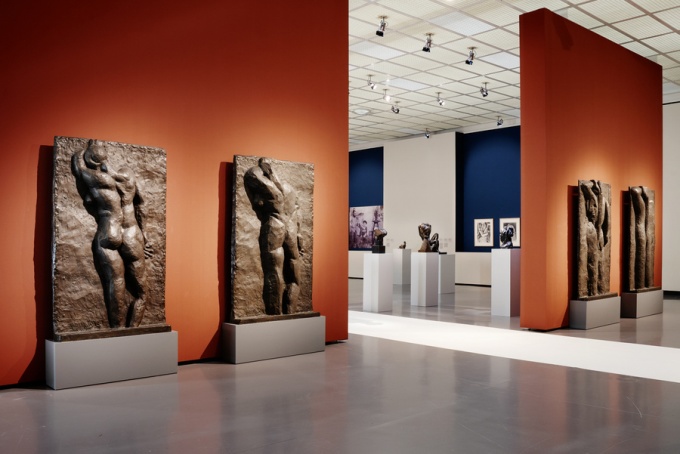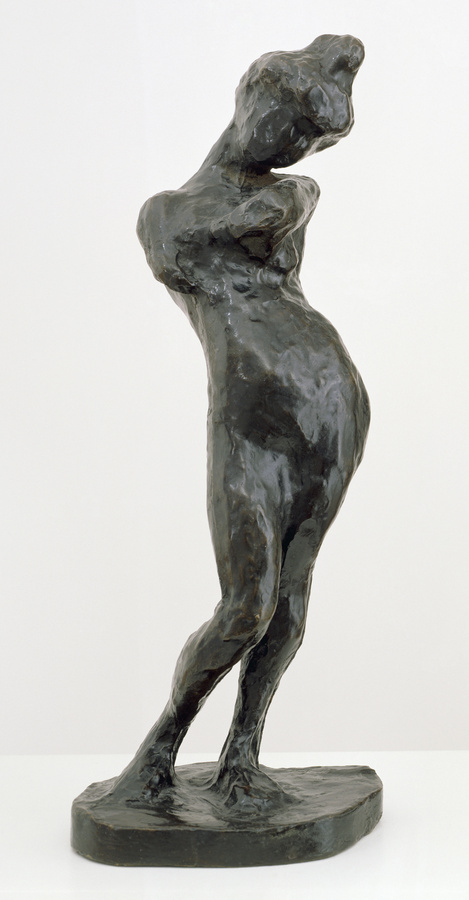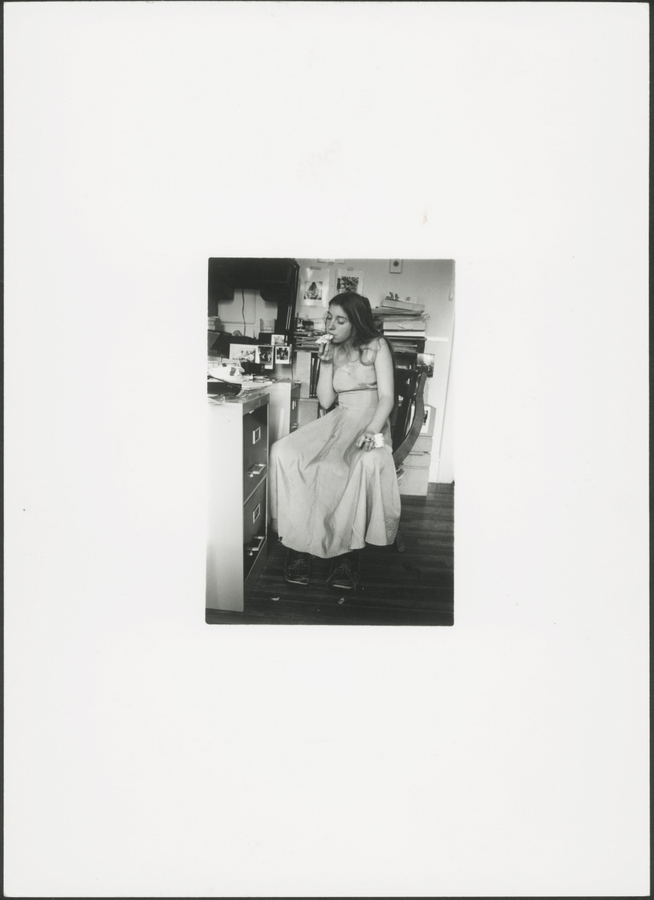
[Image: Exhibition view «Matisse – Metamorphoses»,Kunsthaus Zürich, 2019. Photo: Kunsthaus Zürich, Franca Candrian, works © Succession Henri Matisse/2019ProLitteris, Zurich]
Matisse: Metamorphoses is an exhibition that examines the master’s work in sculpture and how it relates to his two-dimensional art (Kunsthaus Zürich, 30 August-8 December 2019; Musée Matisse, Nice, 7 February-6 May 2020). This exhibition is reviewed from the catalogue.
[…] in order to express form, I sometimes engage with sculpture, which allows me to move around the object in order to get to know it better , instead of remaining in front of a flat surface.
Henri Matisse (1869-1954) made sculpture throughout his career and it was always close to his heart. He was often photographed making sculpture though the pieces themselves met mixed critical receptions and were exhibited only irregularly until his last years. Nearly the entirety of his sculptures was figures – either as nudes or portrait heads – most of them small in stature. The exhibition includes 58 pieces from Musée Matisse, Nice the world’s largest collection of Matisse’s relatively small sculptural oeuvre of just over 80 (mostly small) works. The exhibition includes all states of key works, namely Madeleine I-II, Henriette I-III, Jeanette I-V and Back I-IV. Some of the catalogue texts address certain pieces. The reading of Reclining Nude I (Aurora) (1907) is particularly acute.

[Image: Henri Matisse, Madeleine I (1901), bronze, 54.6 x 19.4 x 17.2 cm, San Francisco Museum of Modern Art, Bequest of Harriet Lane Levy. Photo: Ben Blackwell© Succession Henri Matisse/2019 ProLitteris, Zurich]
This exhibition includes drawings, prints and paintings which are connected to the sculpture. Matisse commonly used his sculptures in still-life paintings. There are drawings and prints of the same model who appeared in a sculpture. Matisse spent periods of years working with only one or two models, allowing us to connect art with specific individuals. The identity and stories of Matisse’s models was the subject of an exhibition and catalogue. Even so, in some cases there is very little public information – quite a contrast with some of the celebrated models of Maillol, Picasso and others. Also included are photographs of sculpture in progress and lost works. The artist at work suggests his approach and the studio setting within which he worked.
From early in his career, evidence tells us that Matisse was serious about his sculpture. Matisse took lessons from Antoine Bourdelle in 1900 and worked in his studio. He returned to modelling in clay and plaster periodically throughout his career. At the end of his life Matisse was pleased to have his sculpture recognised as a significant part of his output. He commented with satisfaction the late exhibitions that featured his sculpture. One reason Matisse’s sculpture has not received the attention it perhaps should have, is that Matisse – despite his achievements as a draughtsman – is seen as a master of colour. His achromatic carvings and bronze castings do not contribute anything to discussion of Matisse as a painter in colour, arranger of colour and generator of light. It is understandable that critics have therefore not known how to fit the sculpture into the story of Matisse or his major contributions to art.

[Image: Hans Marsilius Purrmann, Matisse in his studio, 1900–1903, Archives Henri Matisse, Issy-les-Moulineaux, © 2019 ProLitteris, Zurich]
One catalogue essayist suggests that the interviews, writings and photographs of intermediate states were all – partly at least – a campaign to explain how complex and difficult his work was to counteract the frequent comments that his art looked effortless. This was manifest in his decision to exhibit (in a 1945 exhibition in Paris) finished paintings alongside photographs of unfinished states of these works. This was a veritable demonstration that his art was not simple or effortless to create. This inevitably raises the matter of whether any of the anxiety at these comments (not necessarily criticisms, but possibly intended – or perceived – that way) influenced how Matisse worked. Was there a possibility that this desire to prove his art was hard won led to Matisse performing this in the form of extra stages for photographic records and complication of the facture of his art? This seems unlikely but if the essayist’s hypothesis is correct then these are considerations worth entertaining.
Matisse made extensive use of artistic and ethnographic publications of female nudes. Straddling the blurred line of erotica, anthropology and anatomical reference works, the publications Mes Modèes, L’Étude académique, L’Humanité feminine offered Matisse access to Africa and the Orient without having to travel, though he later would visit Algeria and Morocco. The varied anatomies, “typical” poses and artificial positioning of models as ethnographic examples provided a visual stimuli that was not otherwise available. The exhibition and catalogue include the magazine pages that Matisse used as working sources. The Serpentine (1909) is a standing female nude with one elbow resting on a plinth, an image found in a commercial photograph. What caught Matisse’s imagination was curving serpentine through line that moved from elbow to foot.
Matisse collected art from Africa (and Oceania) and that provided him with a non-Western sculptural syntax, allowing him to see a different route to figuration. It provided necessary rupture. Art nègre became a touchstone for the Fauvists, as it later did for Picasso, and it could be seen at the Musée Trocadéro and shops in Paris. The abrupt alien formulations and brusque geometry of art nègre were so adeptly incorporated into visual Modernism that they seem natural to us. The conceptualisation of body parts in African carving as autonomous masses not organically connected or articulated offered Matisse a radically new way of assembling figures – one sees that very clearly in the artificiality of the Matisse’s portraits of the 1910s. Using geometry for anatomy and treating body parts as solid, discrete and non-realistic forms also presented an approach to sculpture that offered an alternative to the Egyptian, Hellenic and impressionistic methods. Vladimir Markov’s insightful observations of 1913 on the subject of art nègre are quoted in the catalogue essay on this. The exhibition includes works by Rodin, Bourdelle, Maillol, Renoir and Picasso – much of which Matisse would have known. There are pieces of African art and Greco-Roman statues from the artist’s collection, and a selection of pieces from other collections.
“Really, Latin perfection, I don’t care about it, and all this complexity of modelling. It is only the Negroes that concern me any longer, since my last visit to the Trocadéro…” – Matisse, c. 1927
Ellen McBreen’s reading of European Modernists’ subsequent disavowal of the importance of African primitivism in their development as a strategy to cover their tracks is too harsh. There was a degree of self-serving reinvention about these disavowals but they are no different from the common reframing of the past to favour the author in late-life memoirs.
[Image: ]
Matisse commonly used system of series in his sculpture. He would take a work to a state he was satisfied with, have it cast and begin the subsequent work in the series using the original or a cast of the first work. We should not see this as expressly a series of provisional stages preceding a final resolution; rather we should see it as a completed work giving rise to subsequent commentary or correction of the previous work but which exists independently. This is different from Matisse’s habit of having his oil paintings photographed at different stages. In those cases, the initial stages were incorrect or otherwise deficient and were subsumed by an improvement. Matisse could of course have resumed work on a painting by starting a new version and preserving the preceding one. He did not lack for materials, after all. He did keep records for his own edification. Apparently, Matisse’s studio was next to Rodin’s when Matisse resumed sculpting seriously in 1908-9 (and teaching painting, drawing and sculpting). Sandra Gianfreda suggests that Rodin’s practice of taking and using casts of states of sculpture in progress would probably have been known to Matisse, who was deeply influenced by Rodin at the start of his career as a sculptor. Apparently, Matisse did not conceive of his sculptures as needing to be considered in relation to one another. “The Backs were never understood by the artist to be a series; all four bronzes were only grouped retrospectively, the more so as The Back II was only discovered posthumously.”[iii]
Although Matisse asserted in public that single paintings developed in a direct sequential fashion, incrementally advancing to resolution, in private he commented that sometimes he would find himself dissatisfied with a painting and entirely reconceive it at the beginning of a session.[iv] Thus there was no secure path to completion and any logic of progression in a sequence of working photographs could be a retrospective conceit of the viewer – at least in the case of some paintings. (Contrast this with Picasso’s sequences, such as the Bull lithograph, which seems deliberately schematic in its approach.) The issue of seriality is addressed in the display of a number of photolithographs of drawing sequences. This helps to demonstrate points that are relevant to Matisse’s sculpture.
An essay is devoted to the Backs series, fittingly, as it is Matisse’s most significant achievement in sculpture. It notes the existence of a first (“version 0”) lost version, which is known only from photographs. This sculpture reconceived of the rear view of a female nude, with different emphases. This series is also the closest to painting because it is a bas relief, thus is simultaneously pictorial and sculptural, flat and modelled. The Backs were not typical of Matisse’s sculpture, which were very volumetric, fully modelled and sometimes conceived in the round. Almost all Matisse’s sculptures were produced through modelling not carving, and none by assemblage. That said, Matisse’s three-dimensional art can be strikingly linear.
This exhibition catalogue presents a broad and serious treatment of Matisse’s sculpture in depth and in context. For anyone interested in Matisse’s art will find surprises and new information therein.
Kunsthaus Zürich (ed.), Matisse: Metamorphoses, Kunsthaus Zürich/Musée Matisse/Scheidegger & Spiess, 2019, paperback, 232pp, fully illus., €48, ISBN 978 3 85881 836 2 (French-language version available)
© 2019 Alexander Adams
To view my books and art visit www.alexanderadams.art










